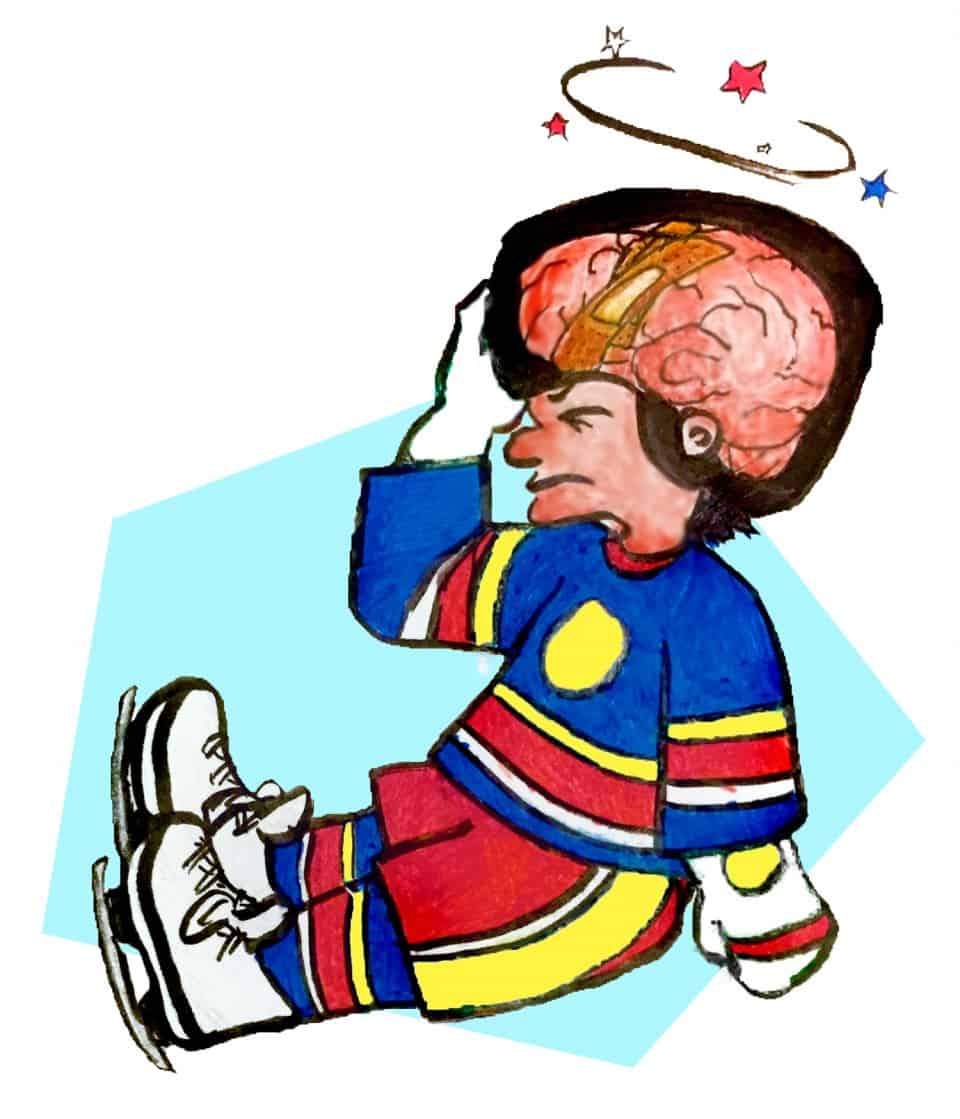Eugenie Bouchard, Canadian tennis star, recently suffered a concussion at the U.S. Open and as a result was forced to withdraw from the tournament. Bouchard, an active social media user, was noticeably absent from the media for three weeks, before posting a picture of a black screen on Instagram with the caption: “Glad I don’t have to sit in this anymore.”
Concussions can be one of the most devastating injuries athletes can sustain. Treatment for sports related brain injuries is constantly evolving in an effort to find the safest, most effective route to recovery. Like Bouchard, U of T alumni and former Varsity Blues hockey player, Mary Claire Geneau sustained a concussion during her first year with the Blues, and can relate to Bouchard’s ‘dark room’ experience. “It’s difficult to feel better as a rookie living in a single room,” said Geneau “you feel isolated from your friends, your team and this can make it more difficult to feel better.”
Although there are multiple studies and medical journals asserting the effectiveness of the ‘dark room therapy’ both Bouchard and Geneau received, Dr. Michael Hutchison, assistant professor and director of the concussion program at U of T believes that there are more effective means of treatment. “We are moving away from the dark room and believe more in an active recovery,” said Hutchison, “for no other injury are patients told not to exercise so concussions are no different.” Although the differences are minimal in the treatment available to varsity athletes who suffer concussions versus the treatments offered to professional athletes like Bouchard, Dr. Paul Comper, a clinical neuropsychologist at the David L. MacIntosh Sports Medicine Clinic, says that a major concern is that varsity athletes are students first, and athletes second. Professional athletes tend to want to get back in the game as soon as possible, as many rely on sponsorship deals and prize money to earn a living, and have unlimited access to teams of therapists to help them get back into the game. In comparison, varsity athletes who also have access to doctors and therapists, are concerned about their ability to keep up with their academics.
Statistics in varsity sport are scarce, and according to the Sports Concussion Institute five to 10 per cent of athletes will sustain a concussion in a season. At U of T, varsity athletes on the baseball, basketball, field hockey, football, ice hockey, lacrosse, rugby, soccer, wrestling, and volleyball teams must all complete a pre-season cognitive and vision screening before they are cleared to train and compete. The screening gives doctors, coaches, and therapists a baseline in the event of a head injury.
Concussions can seriously dissrupt and possibly end an athlete’s season. Depending on the severity of the injury, some athletes are forced to take time off classes, which can put their academic year in jeopardy. Speaking from personal experience, recovering from a concussion can take a major toll on your academics. After sustaining a concussion a few days prior to midterms, I ended up withdrawing from most of my courses because, by the time I was feeling well enough to complete assignments, it was too difficult to make up for the time I spent recovering. Geneau also found herself in a similar situation; in order for her to maintain her eligibility and play the following season, she needed to take four summer courses. “It is common for students to have to drop classes because of how much work they have missed,” Comper suggests.
For some athletes, the fear of being hit again remains when they’re finally cleared to train and compete. Blues track and field athlete, and former volleyball player, Emily Kawaguchi says she hasn’t played a game of volleyball since sustaining a concussion in a warm up over a year ago. “That was my life before and so it’s crazy… I want to play,” said Kawaguchi adding, “but also there is a fear of getting hit [again] because I am not even better from this [concussion].” Although the psychological damage a concussion can inflict on an athlete is detrimental, and can be, in Kawaguchi’s case, career-ending, a small percentage of concussed athletes experience post concussion syndrome. The disorder consists of various symptoms ranging from dizziness to migraines, which can last for weeks after the initial injury. Geneau still experiences difficulty looking at screens and motion sickness as a result of her concussion.
Amy Dinaut, the physiotherapist for the Varsity Blues men’s hockey and women’s rugby teams, maintains that although it’s near impossible to give a standard recovery timeline for a concussed athlete — since treatments vary depending on the individual and the severity of the injury — an active approach to rehabilitation, as opposed to sitting in a dark room, is the best bet.
“Concussion treatments of the past used to have people do nothing after the injury,” said Dinaut. Athletic staff from both the MacIntosh Clinic and Concussion Program closely monitor the active approach, which involves mild cardiovascular, balance, and motor control exercises. “The active approach is something we start when the concussion symptoms have resolved,” said Dinaut, adding that resuming physical activity, no matter how minimal, helps an athlete feel closer to competition again.


